Record, edit and time correct multi-track drums in Logic Pro for Mac
Find out how to keep your drum tracks time aligned when you record and edit them, and how to use quantisation to correct the timing.
Record and edit drum tracks
To make sure multi-track drums are time aligned when you record and edit them, create a group for the drum tracks, record and edit the drum tracks as a group, then flatten and merge the takes after you've finished recording and editing.
Create a group
You should create a group for the drum tracks before you record the tracks, but you can do this afterwards if necessary. However, you need to create the group before you start editing the drum tracks.
Choose Logic Pro > Settings (or Preferences), then click Advanced.
Select Show Advanced Tools, then select Audio.
Click the Group slot in the channel strip of one of the drum tracks, then choose a new group from the menu, such as "Group 1: (new)".
In the Group inspector that opens, click the , then select Editing and Record options. If you're planning to quantise your drum tracks, choose Quantise-Locked.
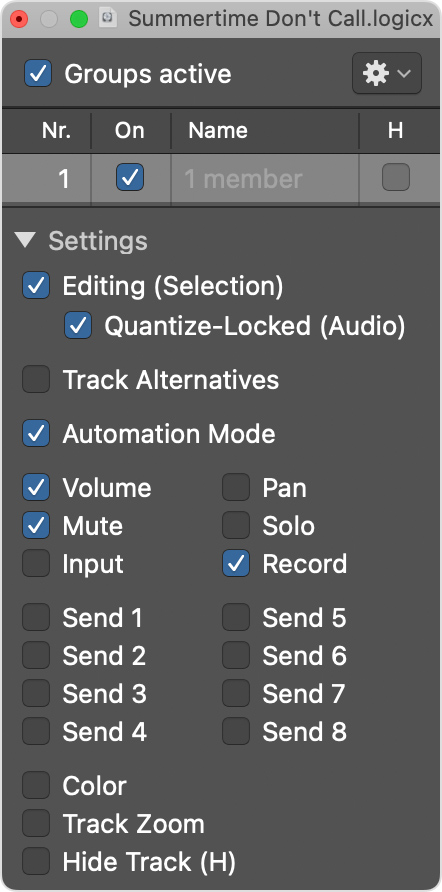
To rename the group, double-click the group name at the top of the Groups inspector.
Open the Mixer, then Option-click the group slot of the other drum track channel strips to assign them to the group.
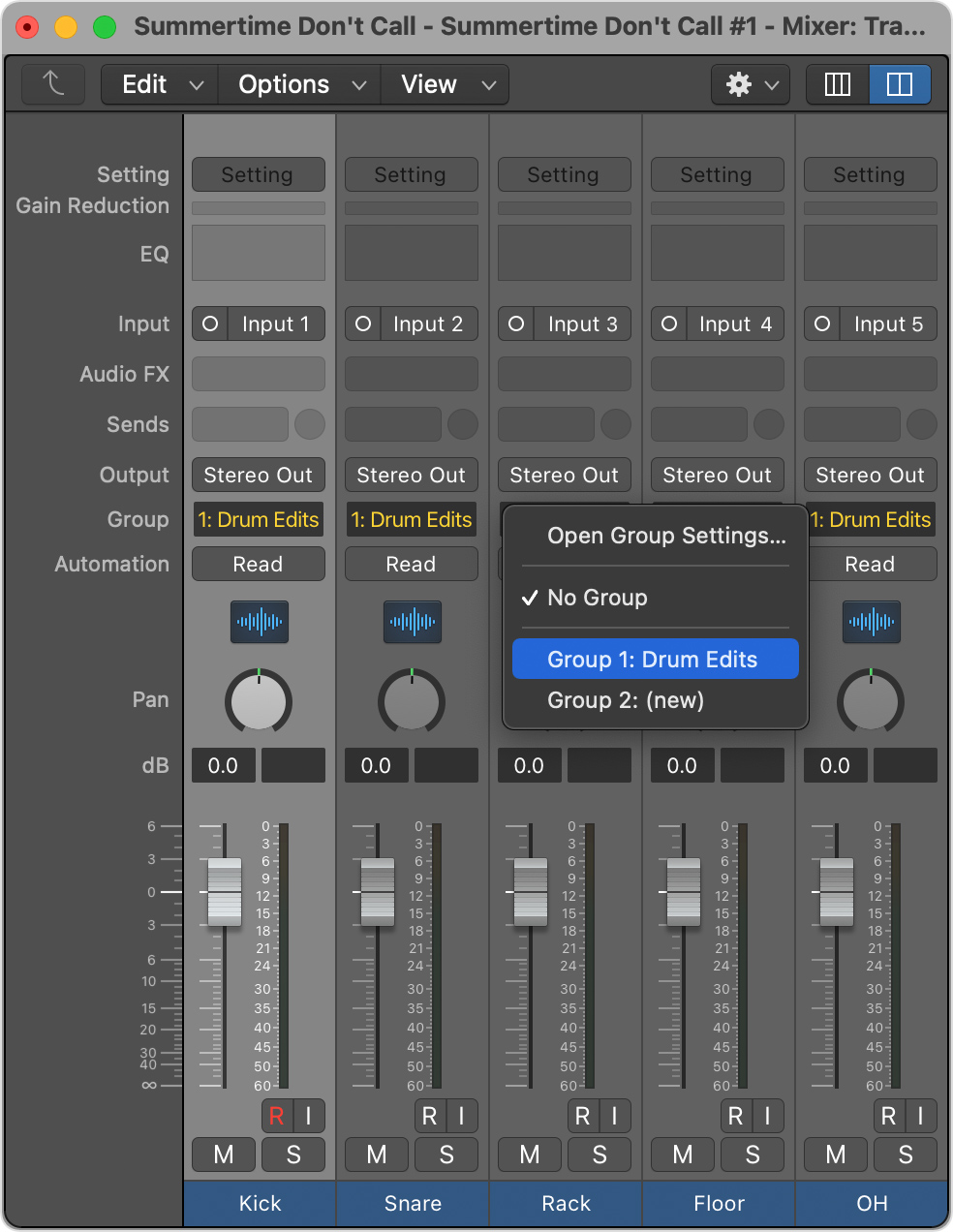
Record and Edit
Record the drum tracks. When you've finished recording, you can edit your drum tracks. Because you selected the Editing option in the Group inspector, all of your edits will occur across all of the drum tracks. If you’ve recorded multiple takes, use Quick Swipe Comping to create a composite take.
Flatten and merge the take folders
When you're satisfied with your comping and editing, flatten and merge the take folders. This ensures that all of the tracks in the group have the same start position and are of the same length.
On one of the tracks in the group, choose the comp you want to keep from the Take Folder pop-up menu.
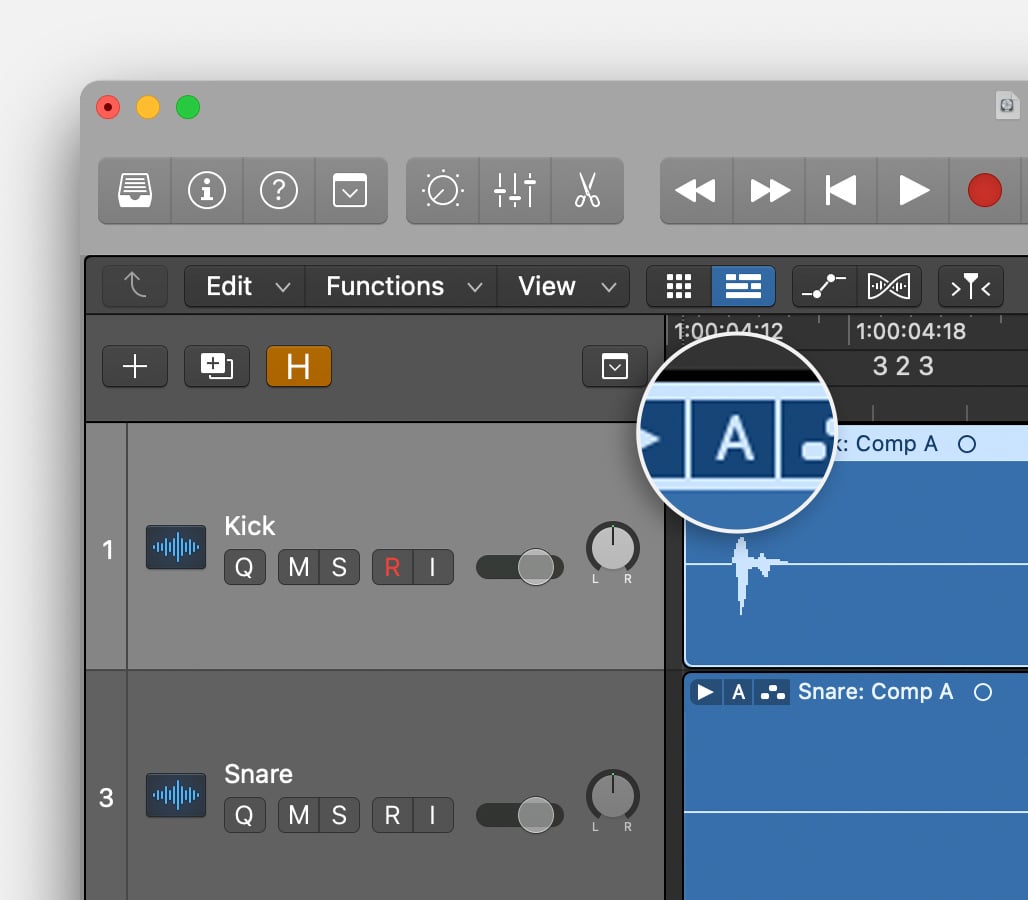
Choose Flatten and Merge from the menu. All tracks in the group will flatten and merge.
By merging all of the regions and takes on each track to one audio file, discrepancies will be less likely to appear. Also, because transient detection is file-based, you'll only need to go through the process of adjusting transients once for each Q-Reference track. After you've flattened and merged the drum tracks, you can correct any timing discrepancies using quantisation.
Correct the timing of your drum tracks
You can use quantisation to correct the timing of your drum tracks after recording, editing, and merging and flattening takes. If you want to quantise your drum tracks, choose the tracks that will be the Q-Reference tracks for the group, enable Flex Mode on the tracks, then apply your timing adjustments.
Choose tracks as Q-Reference
Q-Reference tracks determine quantisation for the rest of the tracks in the group. For best results in most cases, choose the snare and kick drum track (or whichever tracks contain the main instruments for determining the rhythm). If you've used multiple microphones on either drum, choose one track for each.
In the Track Header of the Tracks area, turn off all of the Q-Reference buttons on all of the tracks in the group. The button is green when the Q-Reference is turned on, and grey when it is turned off.
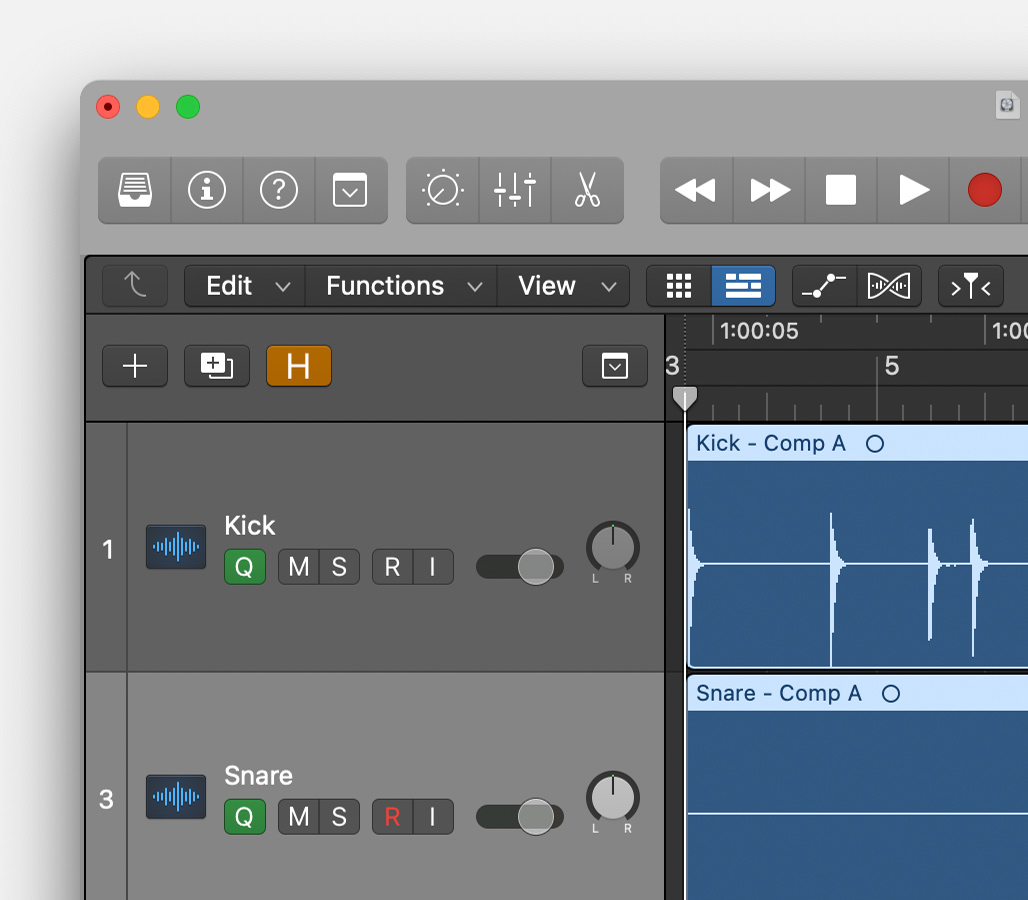
Open one of the tracks you want to use as a Q-Reference in the Audio File Editor, then choose Audio File > Detect Transients.
After Logic has analysed the file, check the transients in the Audio File Editor to make sure they're positioned correctly. In the Audio File Editor, you can add or remove transient markers, move incorrectly placed transients, or add or remove transients manually.
Repeat these steps for any other tracks you're using as Q-Reference. You don't have to adjust the transients for the other tracks in the group. Their timing will be adjusted with sample accuracy based on the transients in the Q-Referenced tracks.
Turn on the Q-Reference button for the tracks you want to use as Q-Reference.
If you want to edit tracks in the Audio File Editor after turning on Q-Reference buttons, make sure you turn them off before editing. Transient edits won't be carried over to your subsequent timing adjustments if the Q-Reference buttons are enabled.
Enable Flex Mode
To enable Flex Mode on all tracks in the group, click the Flex pop-up menu in the Track Inspector for one of the Q-Reference tracks, then choose one of the Flex Modes. For drums, Slicing is usually the best choice, but you can experiment with other options.
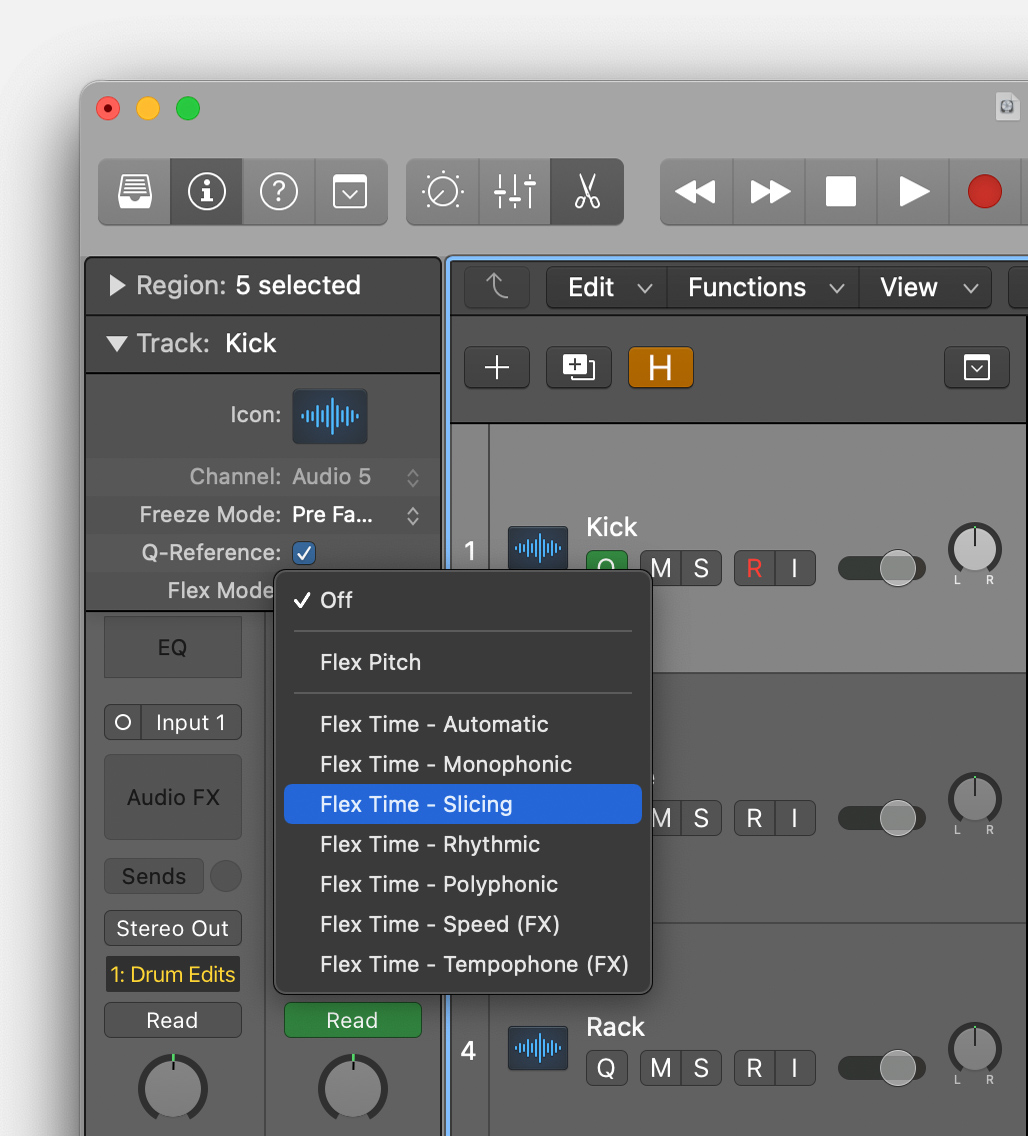
Click the Edit menu in the Tracks area menu bar, then choose Show Flex Pitch/Time.
Apply Timing Adjustments
Make your timing adjustments. For example, apply quantisation to the tracks or manually insert flex markers and drag audio in the reference tracks to the desired positions.
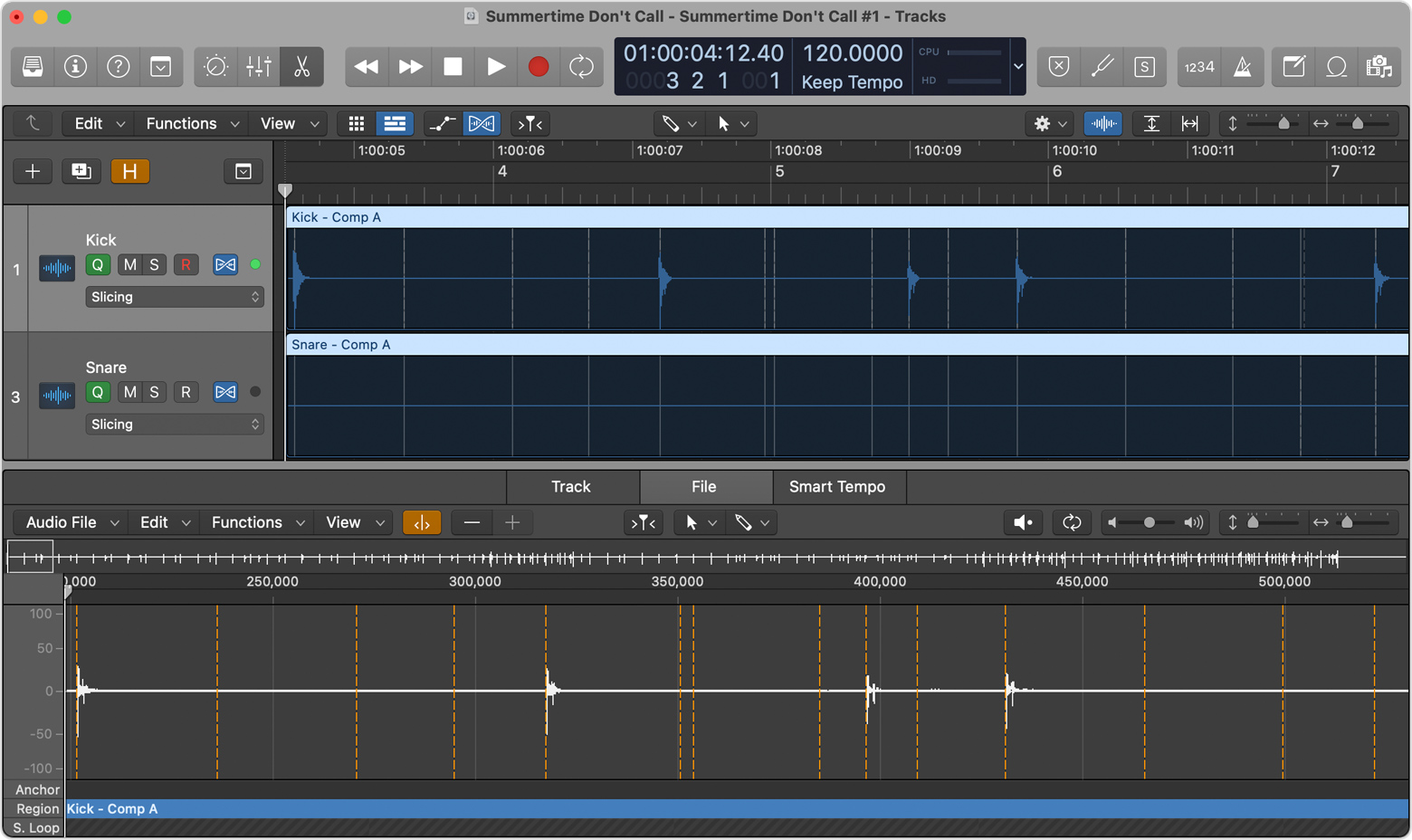
When you apply quantisation, you may find that Logic Pro quantises some transients to unexpected positions. For example, if you choose a quantise value of 1/8 note, a transient in between grid positions, such as a 1/16 note, will be moved to the nearest 1/8 note in places where there is no transient on the 1/8 note grid. You can prevent this by setting an appropriate Q-Range value in the Region inspector:
Select one of the tracks in the group.
In the Region inspector for the track, click the More disclosure triangle.
Click the up/down arrows to the right of the Q-Range parameter.
Choose a relatively short value, such as 1/24 or 1/32. Experiment until you get the result you want.
Q-Range limits quantisation to transients that fall within the value you choose. For example, if you choose 1/32, then any transient further away than 1/32 note from the quantisation grid you choose will not be quantised.
You can use negative Q-Range values to move transients that fall outside the quantise value you've chosen. This can help maintain a natural feel of the performance, while also quantising transients that fall outside the selected range.
